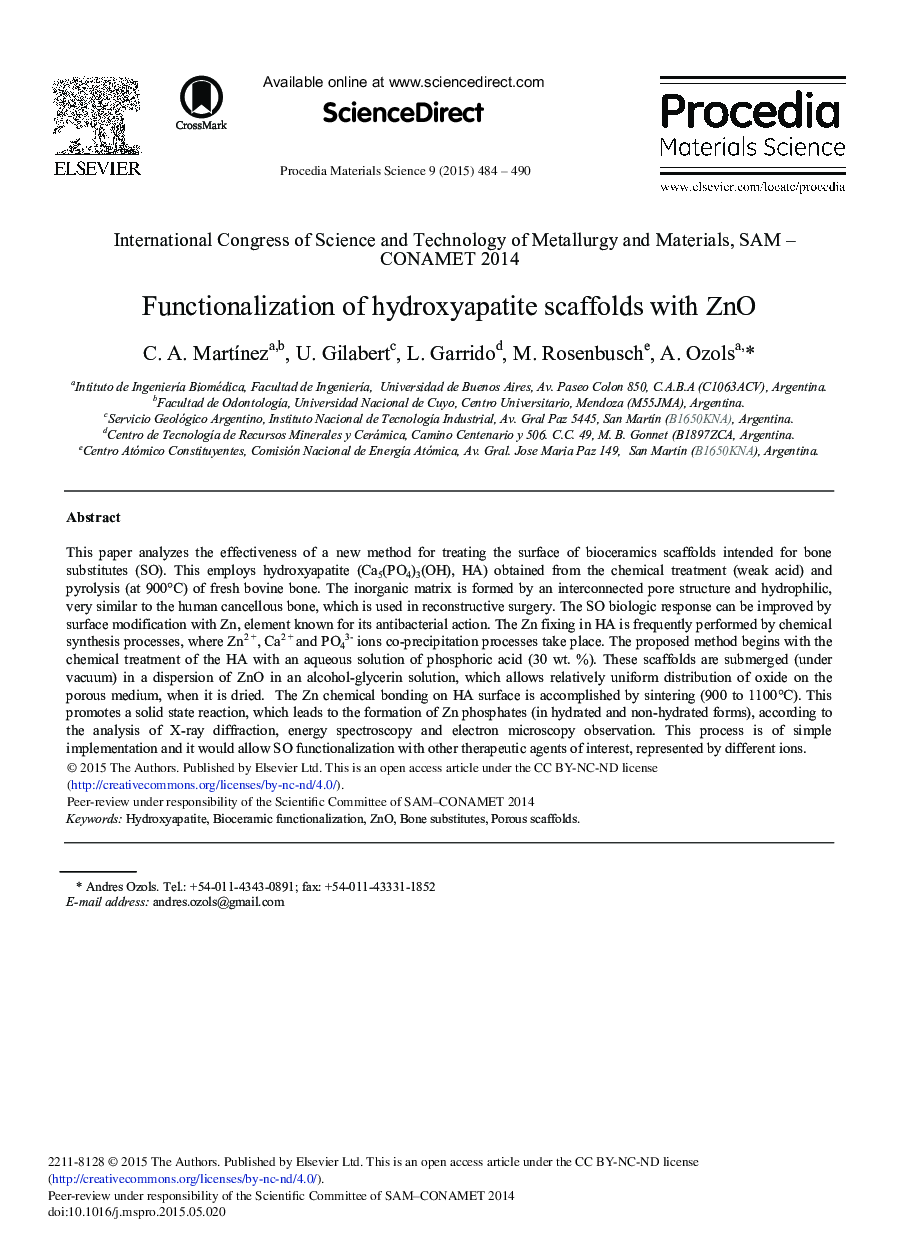| Article ID | Journal | Published Year | Pages | File Type |
|---|---|---|---|---|
| 1634651 | Procedia Materials Science | 2015 | 7 Pages |
This paper analyzes the effectiveness of a new method for treating the surface of bioceramics scaffolds intended for bone substitutes (SO). This employs hydroxyapatite (Ca5(PO4)3(OH), HA) obtained from the chemical treatment (weak acid) and pyrolysis (at 900 °C) of fresh bovine bone. The inorganic matrix is formed by an interconnected pore structure and hydrophilic, very similar to the human cancellous bone, which is used in reconstructive surgery. The SO biologic response can be improved by surface modification with Zn, element known for its antibacterial action. The Zn fixing in HA is frequently performed by chemical synthesis processes, where Zn2+, Ca2+ and PO43− ions co-precipitation processes take place. The proposed method begins with the chemical treatment of the HA with an aqueous solution of phosphoric acid (30 wt. %). These scaffolds are submerged (under vacuum) in a dispersion of ZnO in an alcohol-glycerin solution, which allows relatively uniform distribution of oxide on the porous medium, when it is dried. The Zn chemical bonding on HA surface is accomplished by sintering (900 to 1100 °C). This promotes a solid state reaction, which leads to the formation of Zn phosphates (in hydrated and non-hydrated forms), according to the analysis of X-ray diffraction, energy spectroscopy and electron microscopy observation. This process is of simple implementation and it would allow SO functionalization with other therapeutic agents of interest, represented by different ions.
